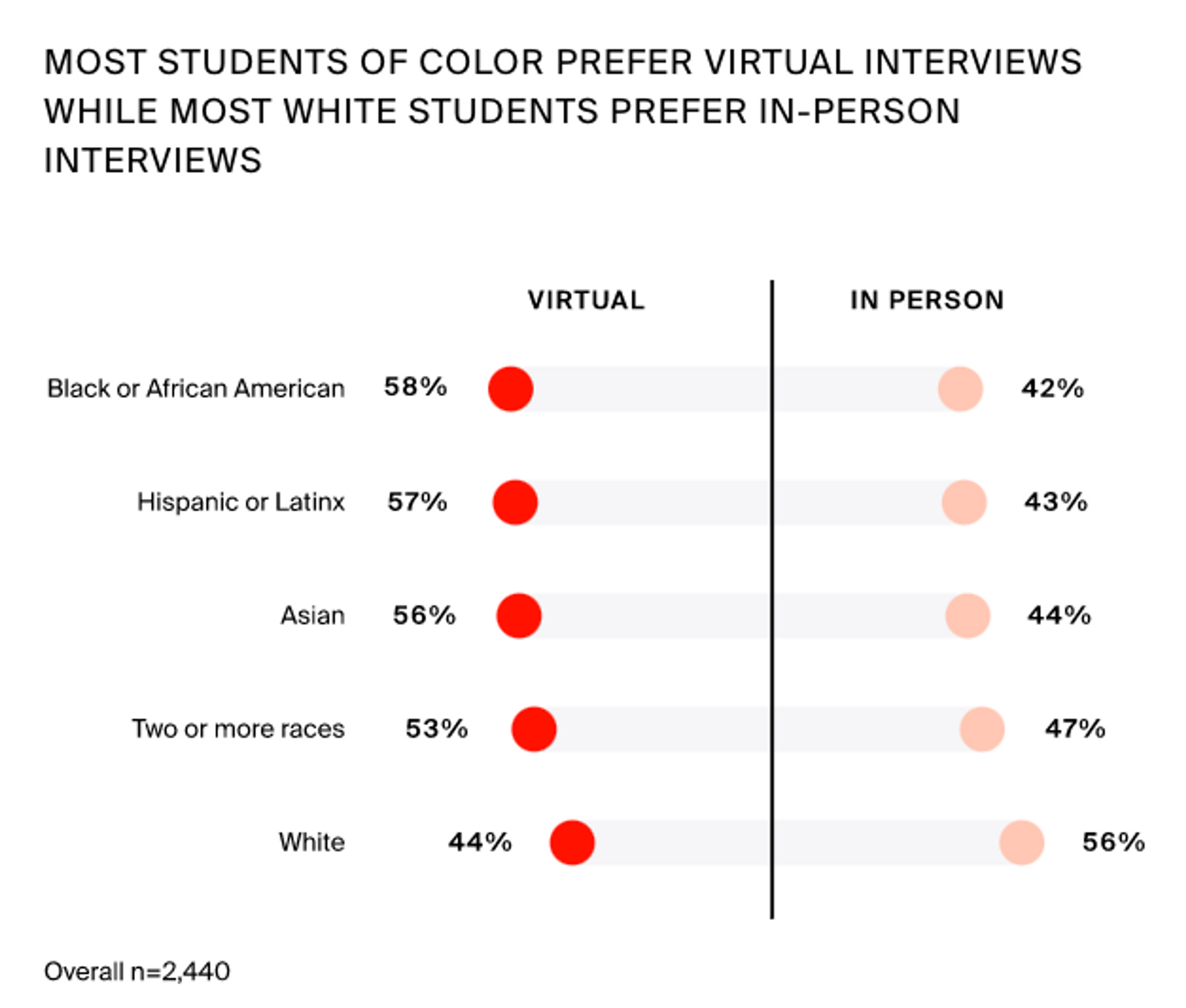According to a report from McKinsey and LeanIn.org, “Between the entry level and the C-suite, the representation of women of color drops off by more than 75%.” With an impactful strategy that puts early talent at the foundation, over time all levels of your organization can become more representative.
To get started, here are 7 strategies to refresh, refine, or add to your approach to building a more representative workforce and double down on your commitment to doing what is right.
7 essential inclusive recruiting strategies
1. Ensure every brand interaction is inclusive
Gen Z is the most diverse generation yet and the one most likely to have people who identify as non-binary or third gender. Even before you connect with them, job seekers see your brand’s inclusivity—or lack thereof. Candidates are reading reviews and testimonials, doing social listening, and noting the companies that miss the mark with inclusion. And they'll be quick to call these employers out, too. Evaluate your talent brand and make sure it’s speaking to who you want to attract.
Early Talent Award winner Gap Inc. routinely surveys candidates and uses that feedback to tweak the user experience. Encourage feedback from students to refine your value proposition, and measure your success in real time.
2. Be a better ally for underrepresented groups
Do you use your influence to sponsor a promising member of your team—who looks nothing like you? Read the Harvard Business Review’s ABCDs of sponsorship—Amplifying, Boosting, Connecting, and Defending—to check yourself, your team, and your culture against how you show up for underrepresented groups. By encouraging and holding folks from all levels of your organization accountable for lifting up others, you’re demonstrating your investment in inclusion from the grasstops to the grassroots.

Why mentorship matters to early talent
Mentorship can be especially important for underrepresented groups. Learn why it matters, and how you can implement at your workplace.
Learn more3. Remove barriers to entry for underrepresented groups

Source: Who wins with virtual recruiting? Leveling the playing field for underrepresented students. Handshake Network Trends.
Historically, most sourcing strategies were built to find more of the same—like recruiting from the same schools or over-relying on referrals and network connections. One cause of systemic barriers to the C-suite for people of color stems from the lack of opportunity to step into managerial roles earlier in their careers.
Build a brand and a business that’s open to all and removes barriers. An easy place to start is to ensure your talent organization recruits from more schools. Expand access by offering virtual interviews and remote work opportunities for underrepresented groups including women, people of color, and people with disabilities.
4. Commit to equity and prove it
According to Bain & Company, “only 35% of young adult workers, most of whom were Black or Latinx, said their employer provides information about career advancement and promotion opportunities.”
For future leaders to look like the rest of us, create opportunities at the internship and entry level, and develop early talent to improve upon that stat. Dedicate standard operating procedures to salary transparency, promotions, and ensuring that underrepresented groups don’t get left behind.
If you want to hire more women, start by promoting women. According to a Handshake Network Trends survey, 65% of Gen Z women look for women in leadership roles before applying for a job.
5. Amplify your Employee Resource Groups/Affinity Groups
Employee resource groups (ERGs), or affinity groups, build community in your company. These groups allow space for open discussions about important issues and ensure employees feel valued and heard. So if you want to create a culture of inclusivity, you can’t afford to deprioritize them.
These groups are integral to a successful inclusion strategy because they help candidates see themselves in a workplace, and are forums for employees to share commonality and belonging. They can also surface topics like equal pay, and influence the strategic direction of your company.
6. Support small program pilots

Source: Gen Z and employers respond to evolving mental health and wellness needs. Handshake Network Trends.
Finding the time, space, and funding to bring these ideas to life without proof they’ll work often leaves them on the drawing board. Encourage your team to start small rather than imagining these ideas as changes to your strategy.
For example, since mental health is central to Gen Zers’ job searches, pilot a new strategic partnership with student psychological services at a partner school. Sponsor activities like journaling and guided meditation.
Establish clear gauges on what success will look like, and articulate the value and suggestions for scaling if successful according to your goals.
7. Determine the right metrics for your organization
You know you need to make data-informed decisions, but taking last year's strategy and making small adjustments won’t move the needle. It starts from the top to create a strategy for the long haul—from deciding which metrics to measure and how often, to where and when you share results, and so on.
Keep in mind that sharing your impact goals and strategy will help you position to candidates that inclusion is essential to your values. Known as a generation driven by their morals, this transparency will resonate with Gen Z.
Getting impact right is all about progress
Most experts agree that being intentional about inclusion is an ongoing process. But you must start somewhere to attract, welcome, and include talent. Take the time to evaluate where you stand currently, what you’re doing well, and where you’re falling short.
A business case is not adequate for why you need to commit to inclusion, and can also repel underrepresented groups by tokenizing them. Inclusion must be woven into the DNA of your people. Employers that are investing in building a representative workforce now are the ones building a company for tomorrow and beyond.
